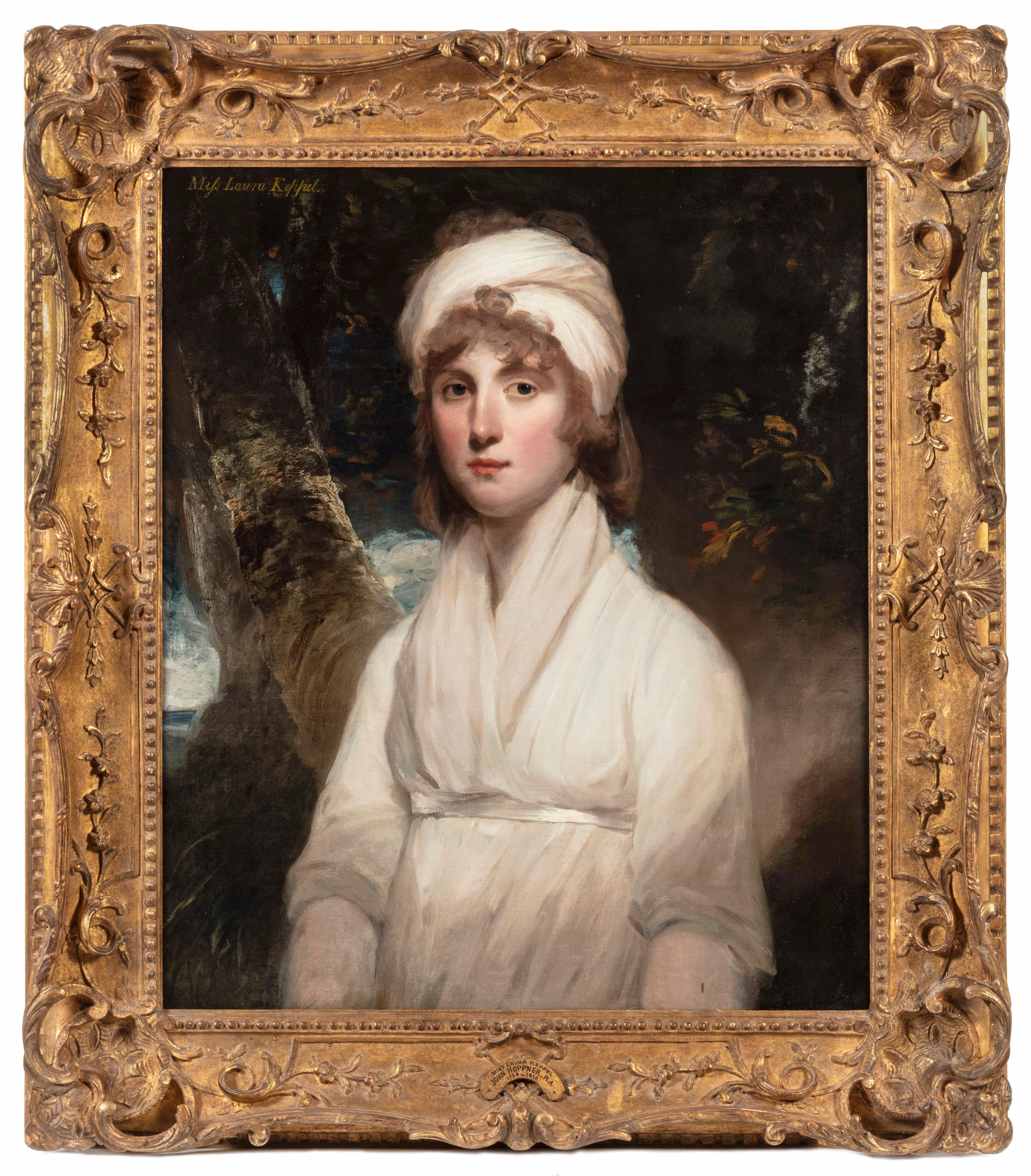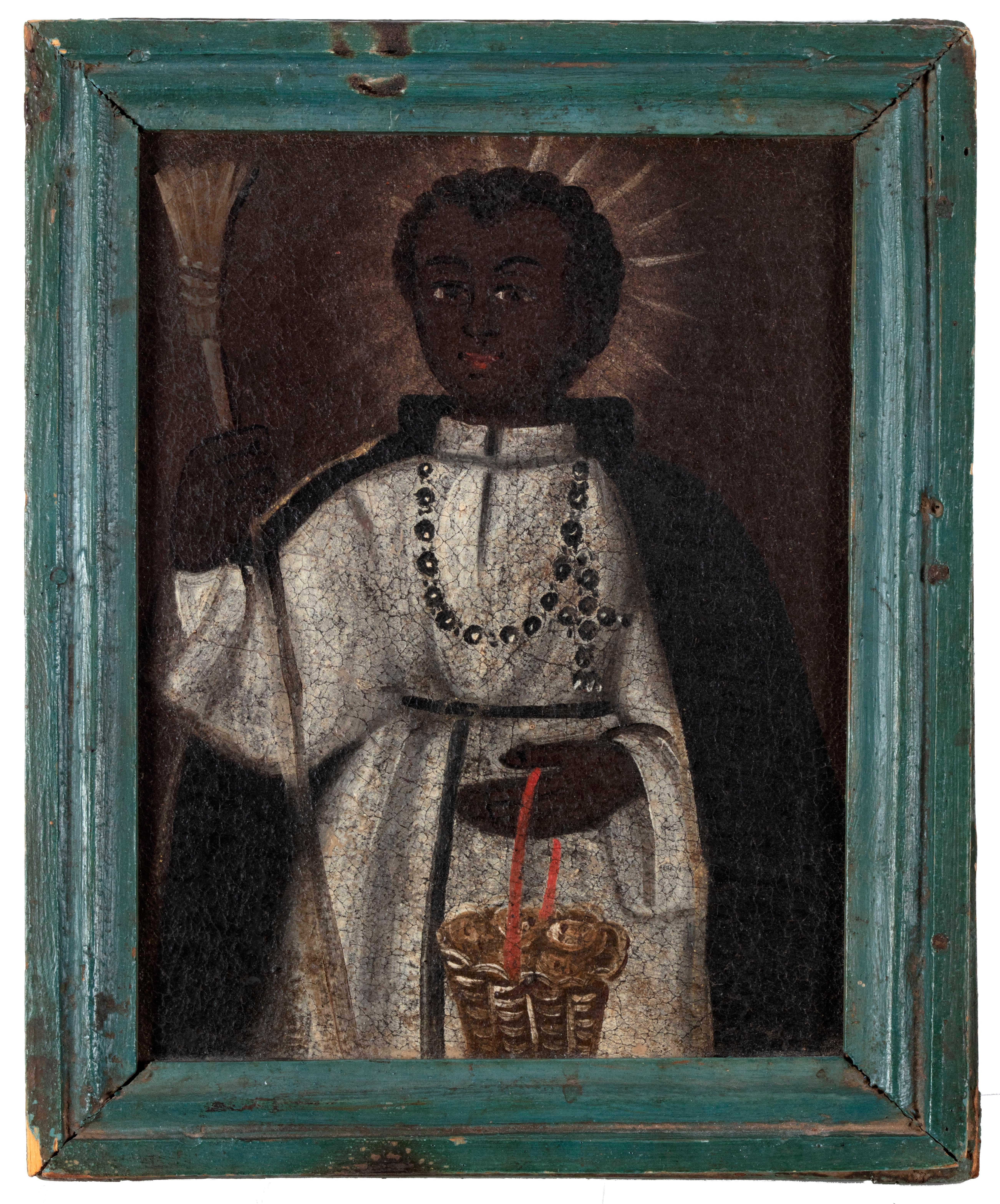Items Similar to Portrait of Ferdinand II de' Medici (1610-1670), Grand Duke of Tuscany, in armou
Want more images or videos?
Request additional images or videos from the seller
1 of 4
Justus SustermansPortrait of Ferdinand II de' Medici (1610-1670), Grand Duke of Tuscany, in armouCirca 1625
Circa 1625
About the Item
The son of Cosimo II and his wife, Maria Maddalena of Austria, Ferdinando II was born in Florence on 14 July 1610. His father's early death in 1621 marked the start of a long regency that lasted until he was able to assume complete control of Tuscany at age 18. Multiple versions of this type exist, the closest of which appears to be the three-quarter-length portrait in the Metropolitan Museum of Art, New York (no. 45.128.13).
- Creator:Justus Sustermans (1597 - 1681, Italian)
- Creation Year:Circa 1625
- Dimensions:Height: 63 in (160 cm)Width: 41.34 in (105 cm)
- Medium:
- Period:Early 17th Century
- Condition:
- Gallery Location:Lincoln, GB
- Reference Number:
About the Seller
No Reviews Yet
Vetted Seller
These experienced sellers undergo a comprehensive evaluation by our team of in-house experts.
1stDibs seller since 2017
8 sales on 1stDibs
Typical response time: 15 hours
- ShippingRetrieving quote...Ships From: Lincoln, United Kingdom
- Return PolicyA return for this item may be initiated within 14 days of delivery.
More From This SellerView All
- Boy with ApplesBy Georg CorneliusLocated in Lincoln, GBThis portrait of a young boy with an apple is a beautiful piece by Georg Cornicelius.Category
Late 19th Century Portrait Paintings
MaterialsOil, Canvas
- The Pet Bullfinch, A Portrait of Two Children by James Sant 19th / 20th CenturyBy James SantLocated in Lincoln, GB‘The Pet Bullfinch’ James Sant CVO RA (1820-1916) oil on canvas 30 x 25 in. (76.2 x 63.5 cm.) James Sant was a well known Victorian painter particularly of women and children, as both portraits are allegorical subjects, i.e. a painting that can be interpreted to have a hidden meaning, often political or moral. Sant exhibited at the Royal Academy and in 1871 was appointed Principal Painter in Ordinary by Queen Victoria, having painted many portraits of the Royal children. One of his most famous being that of Prince Leopold and Princess Beatrice...Category
20th Century Victorian Portrait Paintings
MaterialsOil
- Portrait of Vice Admiral Sir Thomas Brodrick by Thomas Gainsborough 1727-1788By Thomas GainsboroughLocated in Lincoln, GBThomas Gainsborough 1727-1788 Portrait of Vice Admiral Sir Thomas Brodrick Oil on Canvas 75cms x 61cms FramedCategory
18th Century Paintings
MaterialsOil
- Sir Roger de Coverley and his Hounds A Sporting Portrait, signed and dated 1843By Richard Barrett DavisLocated in Lincoln, GBSir Roger De Coverly and his Hounds” by Richard Barrett Davis (1782-1854) Oil on Canvas, Unframed Size: 85 x 112cm Framed Size: 114 x 141cm Signed and dated 1843 Richard Barrett D...Category
19th Century Old Masters Portrait Paintings
MaterialsOil
- Regency Sisters, A Portrait of Two Children - Fredrick Yeates HurlestoneBy Frederick Yeates HurlestoneLocated in Lincoln, GBFrederick Yeates Hurlestone (1800 – 1869) Regency Sisters Oil on Canvas Size: 153cm x 126cm framed Frederick Yeates Hurlstone (1800 - 1869) was an English portrait and historical painter. Hurlstone exhibited at the Royal Academy for many years. He was a member of the Society of British Artists and was President of the Society until his death. He was born in London, the eldest son by his second marriage of Thomas Y. Hurlstone, one of the proprietors of the "Morning Chronicle" (his granduncle, Richard Hurlstone, was a well-known portrait-painter a generation earlier). He began life in the office of his father's journal, but, while still very young, became a pupil of Sir William Beechey, afterwards studying under Sir Thomas Lawrence, and also, it is said, under Benjamin Haydon. His first original work was an altar-piece, painted in 1816, for which he received 20 pounds. In 1820 he was admitted as a student of the Royal Academy, where in 1822 he gained the silver medal for the best copy made in the school of painting, and in 1823 the gold medal for historical painting, the subject being "The Contention between the Archangel Michael and Satan for the Body of Moses". He first exhibited in 1821, sending to the Royal Academy "Le Malade Imaginaire" and to the British Institution a "View near Windsor". These were followed at the Academy in 1822 by "The Return of the Prodigal Son" and a portrait, in 1823 by five portraits, and in 1824 by his "Archangel Michael" and some more portraitsOne of his best early works was "A Venetian Page with a Parrot", exhibited at the British Institution in 1824. In 1824 also he contributed "The Bandit Chief" to the first exhibition of the Society of British Artists. He continued to send portraits to the Royal Academy until 1830, but in 1831 he was elected a member of the Society of British Artists, after which he seldom exhibited elsewhere. He was chosen president in 1835, and again in 1840, retaining the office until his death. He contributed to the society's exhibitions upwards of three hundred portraits and other works, among them being "The Enchantress Armida", exhibited in 1831; "Haidee aroused from her Trance by the sound of Music", 1834; "Eros", 1836; "Italian Boys playing at the National Game of Mora" and the "Prisoner of Chillon", 1837; "The Scene in St. Peter's, Rome, from Byron's Deformed Transformed", 1839; "The Convent of St. Isidore: the Monks giving away provisions", 1841; and a "Scene in a Spanish Posada in Andalusia", 1843. In 1844 and, for the last time, in 1845 he again sent portraits to the Academy. His subsequent works at the Society of British Artists included "The Sons of Jacob bringing the blood-stained garment of Joseph to their Father", 1844; "Salute, Signore", 1845; "A Girl of Sorrento at a Well", 1847; "Inhabitants of the Palace of the Cæsars—Rome in the Nineteenth Century" 1850; "Columbus asking Alms at the Convent of La Rabida" 1853; "The Last Sigh of the Moor" (or "Boabdil el Chico...Category
19th Century Victorian Figurative Paintings
MaterialsOil
- Thomas Beach (1738 - 1806) Two Children Oil on CanvasBy Thomas BeachLocated in Lincoln, GBTHOMAS BEACH (1738-1806) Two Children Oil on canvas Canvas size : 50 x 40 inches (127 x 102 cms) Framed size : 57 x 47 inches (145 x 120 cms) Frame : Early 20th century carved ...Category
18th Century Figurative Paintings
MaterialsOil
You May Also Like
- Venice Landscape Italian Oil on Canvas Painting in Gilt Wood Frame, Belle EpoqueLocated in Firenze, ITThis delightful turn of the century (early 20th century) oil on canvas painting represents an Italian landscape with one of the most famous squares in the world: Piazza San Marco in ...Category
Early 20th Century Impressionist Landscape Paintings
MaterialsCanvas, Oil
- Portrait of a GentlemanBy Ippolito Scarsella (Scarsellino)Located in New York, NYProvenance: Suida-Manning Collection, New York Private Collection Exhibited: Venetian Paintings of the Sixteenth Century, Finch College Museum of Art, New York, October 30-December 15, 1963, no. 31. Veronese & His Studio in North American Collections, Birmingham Museum of Art, Oct. 1-Nov. 15, 1972, and Montgomery Museum of Fine Arts, Dec. 5-Dec. 31, 1972 Literature: Robert L. Manning, A Loan Exhibition of Venetian Paintings of the Sixteenth Century, exh. cat. New York 1963, cat. no. 31ill., as by Veronese Stephen Clayton and Edward Weeks, eds., introduction by David Rosand, Veronese & His Studio in North American Collections, Birmingham 1972, as by Veronese, p. 38 ill. Terisio Pignatti, Veronese, Venice 1976, I, p. 199, cat. no. A225, II, fig. 908, as attributed to Veronese Terisio Pignatti and Filippo Pedrocco, Veronese; catalogo completo dei dipinti, Florence 1991, no. 54°, as attributed to Veronese. Terisio Pignatti and Filippo Pedrocco, Veronese, Milan 1995, II, pp. 517-518ill., cat. no. A 56, under attributed paintings, by Veronese and workshop) John Garton, Grace and Grandeur; The Portraiture of Paolo Veronese, London-Turnhout 2008, p. 237, fig. 77, cat. no. R16, as workshop of Veronese. Scarsellino’s art is widely regarded as critical link between the Renaissance and the Baroque styles in Emilian painting; not only was he an important transmitter of the heritage of the Renaissance, but he was also open to innovative ideas, and was one of the earliest to experiment with the trend to naturalism that would become fundamental to art of the new century. Born around 1550, he received his earliest training from his father Sigismondo, an architect and painter; it was probably while working at his father’s side as a youth that he acquired the nickname Scarsellino, or “little Scarsella”. After absorbing the principles of his art in Ferrara and Parma, he went to Venice in 1570, staying for four years and working in the shop of Veronese. In the following decade, his art —especially in terms of its piety and its development of landscape— demonstrates a strong sympathy with that of the Carracci, with whom he worked in 1592-1593 at the Palazzo dei Diamanti in Ferrara. Maria Angela Novelli and later Alessandra Frabetti both propose that Scarsellino traveled to Rome, although such a trip has not been documented; if he did travel to Rome, it probably would have occurred during the years that Scarsellino’s colleagues Agostino and Annibale Carracci were there, that is, beginning in 1595 and until 1609. The last decades of Scarsellino’s career again involve stylistic experimentation, this time in a manner that would bring his work very close to the progressive figurative naturalism of Carlo Bononi and prepare the way for Guercino. The present portrait of a distinguished gentleman had been long thought to be by Paolo Veronese and was in fact attributed to him by such distinguished connoisseurs as Adolfo Venturi and Wilhelm Suida. The portrait’s style is, however, distinct from Veronese’s, although clearly indebted to it, and the attribution to the young Scarsellino is wholly convincing. The painting would then date from the 1570s – a date confirmed by the costume the subject wears. The puffed hat that appears in the painting had a rather short-lived vogue in the early 1570s. One sees it in Giambattista Moroni’s Portrait of Count...Category
18th Century and Earlier Baroque Portrait Paintings
MaterialsCanvas, Oil
- Portrait of Laura Keppel, later Lady SouthamptonBy Sir John HoppnerLocated in New York, NYInscribed, upper left: “Miss Laura Keppel” Provenance: Commissioned from the artist and by descent in the Keppel family estate, Lexham Hall, Norfolk, to: Major Bertram William Arnol...Category
18th Century Paintings
MaterialsCanvas, Oil
- Saint Martin de PorresLocated in New York, NYProvenance: Private Collection, New York, until 2022. Martín de Porres was born in Lima in 1579, the illegitimate son of a Spanish-American father, J...Category
Late 18th Century Paintings
MaterialsCanvas, Oil
- Portrait of a GentlemanLocated in New York, NYCircle of Jacques-Louis David (French, 18th Century) Provenance: Private Collection, Buenos Aires Exhibited: “Art of Collecting,” Flint Institute of Art, Flint, Michigan, 23 November 2018 – 6 January 2019. This vibrant portrait of young man was traditionally considered a work by Jacques-Louis David, whose style it recalls, but to whom it cannot be convincingly attributed. Rather, it would appear to be by a painter in his immediate following—an artist likely working in France in the first decade of the nineteenth century. Several names have been proposed as the portrait’s author: François Gérard, Louis Hersent, Anne-Louis Girodet (Fig. 1), Theodore Gericault, and Jean-Baptiste Wicar, among others. Some have thought the artist Italian, and have proposed Andrea Appiani, Gaspare Landi...Category
18th Century Old Masters Paintings
MaterialsCanvas, Oil
- Portrait of George and Edward Finch-Hatton in Van Dyck DressBy David MartinLocated in New York, NYAppointed Portrait Painter to the Prince of Wales in Scotland in 1785, David Martin was the leading Scottish portrait painter of his generation. The artist is best known in the United States for his portrait of Benjamin Franklin, which is in the White House collection, Washington, D.C. The sitters depicted in this double portrait were the sons of the British diplomat Edward Finch-Hatton. George (1747-1823), later of Eastwell Park, Kent, is shown seated, reading an ancient charter or medieval manuscript...Category
18th Century and Earlier Paintings
MaterialsCanvas, Oil





